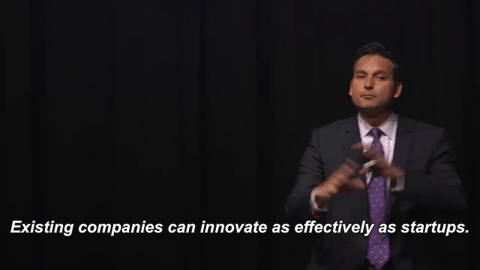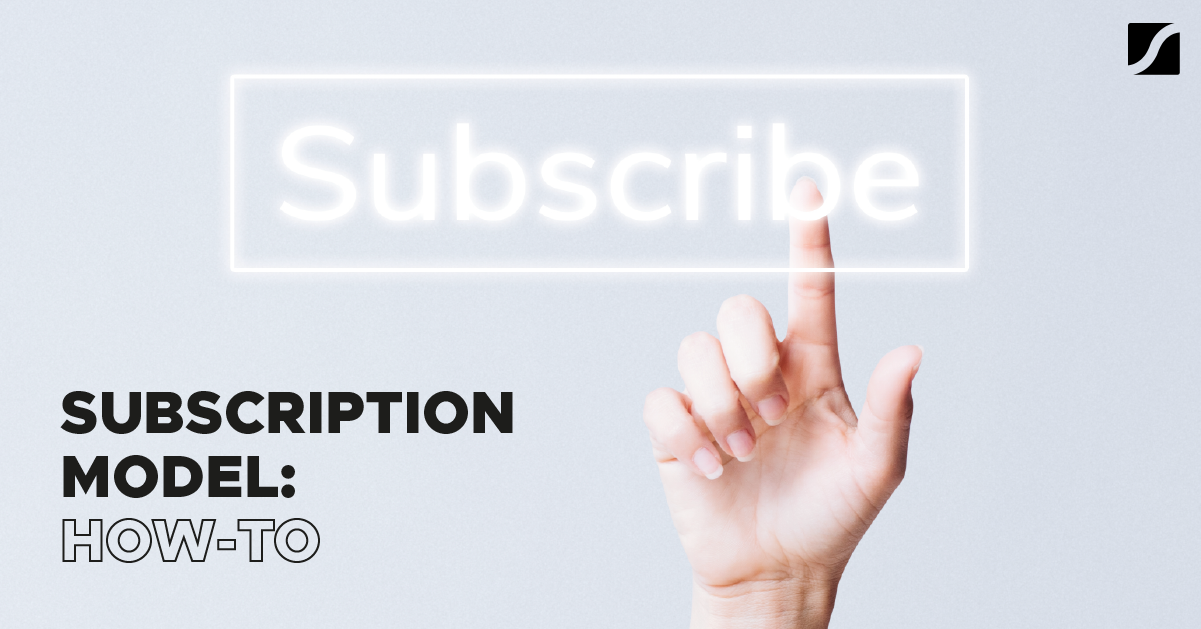Ask for the Cash: Convince Your Customers to Pay You in Advance
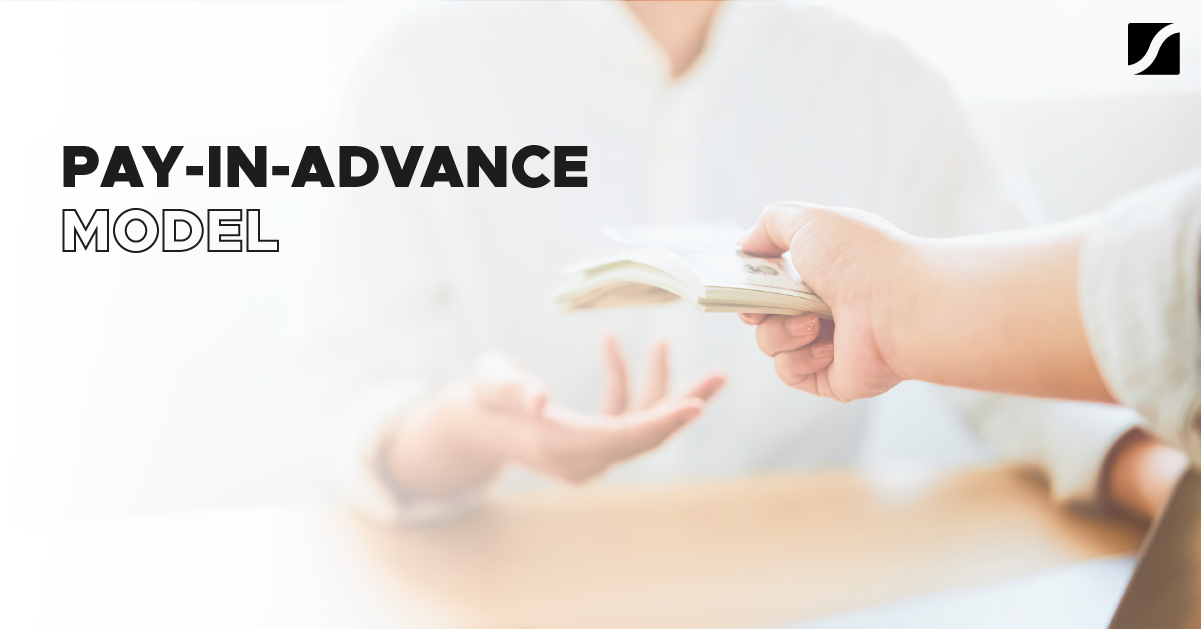
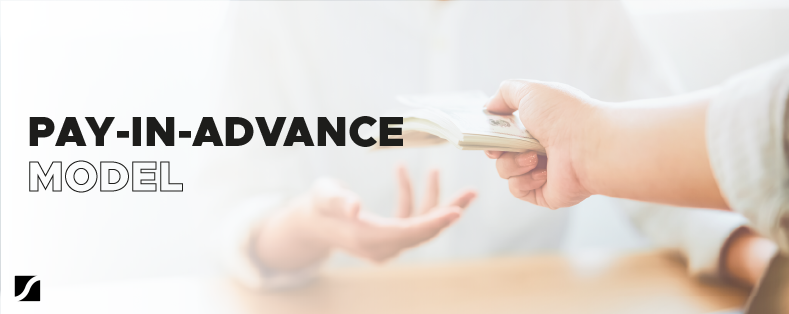
In the 1950s and 60s, venture capital (VC) developed in California and around Boston’s Route 128 corridor. It subsequently took off in the 1980s and was then exported around the world.
Unfortunately, VC has grabbed the entrepreneurial financing limelight to such a degree that winning funding from VCs and business angels has become a goal unto itself for many entrepreneurs. Indeed, many incubators and accelerators boast of their graduates’ success in raising such capital.
Surprisingly however, there’s been little attention given to the practice of finding ways of getting customers to fund your venture. This, despite the fact that the vast majority of fast-growing businesses never raise any VC!
The pay-in-advance model is one of the five customer-funded models successful companies commonly use to scale up without needing to rely on investors.
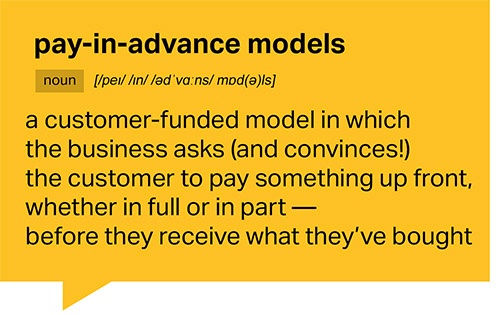
There are many benefits of getting your customers to pay you in advance even before you produce the goods. These benefits include:
- Only requiring the order and an initial payment.
- Easy proof of concept when one or more people pay you for your service.
- Validation of product. If you can’t find a single person to pay you, then perhaps it wasn’t a great idea to begin with, or that it might need more work — it’s better to know this upfront, than later.
This all sounds fine and dandy, but it does beg the million-dollar question: Why would customers be willing to pay you in advance for something that’s not even there yet?
Here are four reasons:
- You are solving a customer’s compelling problem
- You have built trust with your customers
- You have the technology that can solve the problem that others can’t
- Your offering is very different from what’s in the market, and your customer prefers yours
Customers Will Pay You in Advance for Solving a Compelling Problem

To shop at Costco, you’ll need to become a member. And to become a member, you’ll have to pay, from $55 to $110 in the United States or from £24 to £66 in the UK.
Why on earth would anyone pay to shop in a store? It doesn’t make sense at first. And yet, millions of families are willing to pay to shop at Costco because of the benefits they get in return: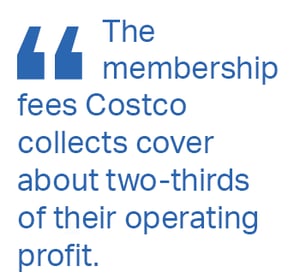
- Rock-bottom prices — they save enough to more than pay for the annual membership fee.
- Huge selection — everything from food to apparel to consumer electronics.
- The eye-opening treasure hunt that any visit to Costco brings, due to their ever-changing assortment of goods. You could find live Maine lobsters in one week, electric pianos the next; and their offers are always well priced.
In other words, Costco has solved a few very compelling problems for customers who want to save money for their everyday items, save time by only needing to visit one place to get everything they need, and also find exciting new bargains.
To make these offerings work, what Costco has shrewdly figured out is that by asking its customers to pay in advance for the privilege of shopping at Costco, the company can earn nearly enough on the membership fees alone.
In fact, in most years the membership fees Costco collects cover about two-thirds of their operating profit.
By collecting the funds in advance to cover most of their operating costs, and by turning their inventory faster than they pay their suppliers, Costco can run the business on gross profit margins much lower than its competitors can. This allows them to offer benefits and unique products which its competitors struggle to match. Try competing with that if you are Walmart or Target!
Perhaps not surprisingly, Costco’s pay-in-advance model has funded very rapid growth over its less than 40-year history, surpassing the $100 billion mark in revenue in 2013 and $150 billion in 2019.
Customers Will Pay You in Advance if You Win Their Trust

In 1984, a 19-year-old college freshman at the University of Texas, Austin, was convincing customers — over the phone from his dorm room — to pay him in advance for computers that were not even built yet.
That 19-year-old was none other than Michael Dell, founder of Dell Computer.
When Dell first started his company, he ran it the way typical businesses operate. He would put down the cash required to get the parts and inventory to make the computers, and then wait for customer sales.
This however meant a lot of cash was swallowed up into inventory without knowing when the next sale would come in. Before long, his company ran short of cash and almost shut down as a result.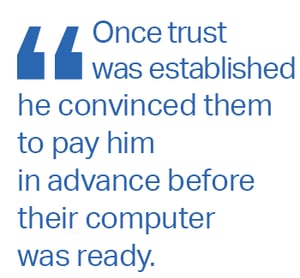
Michael Dell decided to rethink the way his company made sales. That’s when he began working on nurturing direct relationships with his customers. Once trust was established, he convinced them to pay him in advance before their computer was ready.
Dell now had his customers’ cash to buy the supplies needed to build the computers they ordered. And his growing cash balance helped convince his suppliers to give him good terms.
By getting his customers to pay in advance, Dell completely changed his company’s cash flow, and spurred its ability to scale rapidly.
The result? Dell Computer became one of the fastest growing companies, with its share prices roughly doubling almost every year in the 1990s. By adopting a customer-funded pay-in-advance model, Michael Dell became a multi-billionaire.
And who, might you guess, kept more of the value he created: Michael Dell or Steve Jobs (who raised round after round of VC, and got fired once along the way)? It’s Michael Dell, hands-down. Even better, who controlled and still controls his company over the entire journey?
You guessed it: Michael Dell.
Customers will Pay You in Advance for Superior Technology

Another famous company that has grown by getting customers to pay in advance is Tesla.
With fossil fuels being connected to climate change, not to mention the fact that they are also a depleting resource, there is a pressing need for the transportation industry to switch to clean energy.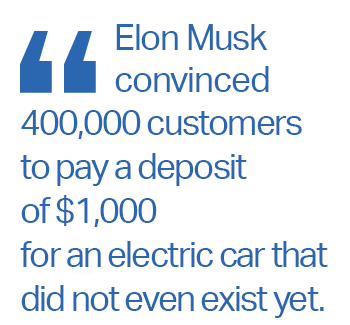 Enter Elon Musk with his luxury electric car, the Model 3. While Tesla may not be producing more cars than GM, Toyota, or Ford, they are most certainly outpacing and outsmarting both these companies. Tesla is innovating faster than any other car manufacturer in the market.
Enter Elon Musk with his luxury electric car, the Model 3. While Tesla may not be producing more cars than GM, Toyota, or Ford, they are most certainly outpacing and outsmarting both these companies. Tesla is innovating faster than any other car manufacturer in the market.
By solving a compelling problem with innovative technology unique to Tesla, Elon Musk convinced 400,000 customers to pay a deposit of $1,000 for an electric car that did not even exist yet — that’s nearly half a billion of dollars paid in advance to fit out the factory and fund its growth.
It must be noted, however, that a contributing reason Tesla was able to convince their customers to put a down payment was because Musk had built trust in his company. Tesla’s founder, Elon Musk is a powerful force behind the brand, building trust that is certainly helping to drive Tesla’s success.
In short, the more reasons you give your customers to pay you in advance, the more they’ll want to pay you!
Customers Will Pay You in Advance for Something Different

Threadless, named the “Most Innovative Small Company in America” by Inc. magazine in 2008, is a community of artists and designers and a crowdsourced e-commerce website.
They produce and sell T-shirts and other products designed and selected by the Threadless community.
Theirs is a unique offering among the plethora of fashion brands that typically push out their designs to consumers. What makes the story behind Threadless spectacular is the fact that it was never intended to be a business. According to co-founder Jake Nickell in his book about the company’s evolution, “When Jacob DeHart and I started out, it was all just a hobby—a fun thing to do for the other designers we were friends with.”
It began with a competition leading up to a New Media Underground Festival in London in November of 2000. Nickell posted a T-shirt design on the dreamless.org forum. His design was the winning design among nearly 100 entries.
Though it was never actually printed, and neither was any prize money awarded, the competition gave Nickell an idea: “It would be fun to have an ongoing competition where people could always submit T-shirt designs, and we would print the best ones.”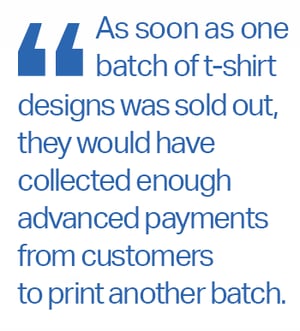 “Threadless started about one hour after coming up with the idea”, Nickell recalled. That very night, Nickell and DeHart posted their first call for entries on the dreamless.org forum.
“Threadless started about one hour after coming up with the idea”, Nickell recalled. That very night, Nickell and DeHart posted their first call for entries on the dreamless.org forum.
They picked the winners — 5, out of nearly 100 entries. They then built a website on which to sell the first batch of tees, later adding a voting system so the user community could vote on which were the best designs.
A pay-in-advance customer-funded business was thus born. As soon as one batch of t-shirt designs was sold out, they would have collected enough advanced payments from customers who had ordered the next winning design to print another batch.
Fast forward to 2002, there was enough business — 10,000 community members and $100,000 worth of T-shirts sold that year — that the duo moved the business out of Nickell’s Chicago apartment into a 900-square-foot office. Fast-forward to 2013, and Threadless was serving 2.5 million customers, and offering 10 new designs every Monday.
.
Making Pay-in-Advance Models Work: Ask for the Cash, and for Good Terms, Too!
The companies in this article’s examples share one very important thing in common: They all had the audacity and persistence to ask for what they needed to start their business through pay-in-advance models.They asked their customers to pay upfront, in one way or another. And, importantly, they negotiated attractive payment terms from their key suppliers – the longer the better! These examples from various industries also show how a pay-in-advance model can work for companies of any size or in almost any industry.
If you can find a way to integrate a pay-in-advance model into your mid-market business, then you too can enjoy the benefits of enhanced cash flow, more rapid growth, and up-front validation of your product or service.
Are there any disadvantages of the pay-in-advance model you should be aware of before you dive into it? Well, the only disadvantage I can think of, is if you spend the money customers paid you in advance wildly or foolishly.
As long as you don’t do that, if you can find a way to convince your customers to pay you in advance, you can most certainly thrive.


